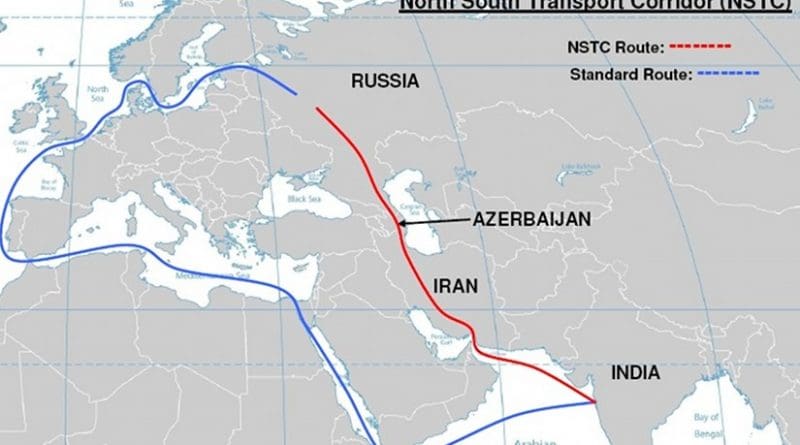Southern Gas Corridor: A Grand Project In The Making – OpEd
By Peter Tase
To the fans of Game of Thrones, the words “Winter is coming” is an exciting overture that has stuck to them becoming one of the mostly quoted movie lines in the popular culture. The words have quite the opposite effect for European leaders challenged to keep their countries warm and industries operating when the winter is coming every year.
This fear is caused by none other than Russia’s ever growing manipulation of gas exports and energy geopolitics, as a whole. Southern Gas Corridor, a mega-pipeline that stretches from the Caspian basin to the Southern Italy might just be the resistance to a single supplier domination.
The Kremlin has always made sure that Russian state-owned companies played politics in the winter, when its European consumers were most vulnerable. Nine years ago, Eastern European nations of Bulgaria, Greece, Macedonia and Croatia in addition to Ukraine itself, were hard hit by cuts of the Russian gas. Looking back to 2009, when the Russian-imported gas stopped to flow to Europe leading to nearly a dozen deaths in extremely cold winter, European leaders made a commitment to increase their efforts to find alternatives from elsewhere to ease the dependence on Russian gas.
The energy-hungry Europe gets its gas supplies primarily from Norway, North Africa and Russia. Russia is responsible for nearly one third of gas imports in Europe and considers it a strategic leverage in its dealings with the European Union and by association, the United States. A decade ago, the European Commission issued its Energy Security and Solidarity Action Plan, making it a priority to help Eastern European countries diversify its gas imports and now identifies Southern Gas Corridor as the backbone of the greater project for substantially decreasing Europe’s dependency on a single supplier.
The Southern Gas Corridor (SGC) is mega-pipeline which stretches for 2,175 miles by connecting South Caucasus Pipeline (from Azerbaijan to Georgia), Trans-Anatolian Pipeline (TANAP which crosses Turkey), and Trans-Adriatic Pipeline (TAP, picking up on Turkish-Greek border, crossing Greece, Albania, Adriatic Sea and ending in Southern Italy). By far, one of the largest energy projects in the world, SGC will transport 16 bcm of natural gas per year from Azerbaijani gas fields to Europe starting from 2020. At the initial stage, the two-phase Shah Deniz offshore gas and condensate field located in the Azerbaijani sector of the Caspian Sea, is the only supplier of the natural gas through the SGC.
Turkey which is the transit country in this project will also consume 6 out of 16 bcm to be exported from Azerbaijan, leaving 10 bcm to Eastern European customers. According to the BP, the total estimated reserves of the field are 1.2 trillion cubic meters (tcm) of natural gas and nearly 2.2 billion barrels of condensate.
However, the European Union looks beyond Azerbaijani gas, betting on additional supply volumes from potential Central Asian exporters like Turkmenistan, Middle East and increasingly Eastern Mediterranean. As expected, nine European buyers have already committed to import Azerbaijani gas coming though SGC and are likely to increase their imports once the mega-pipeline fills its full capacity with gas from additional sources. According to the European Commission, EU intends to increase these imports to 80 to 100 bcm of gas per year in the future.
Last month the European Investment Bank approved a €1.5 billion loan for construction of the Trans-Adriatic Pipeline making the last part of the grand project a reality. The project has gotten consistent support from both Obama and Trump administrations. In his letter addressing attendees of an annual Oil and Gas Exhibition in Baku in June 2016, President Obama underlined the importance of Southern Gas Corridor for energy security in Europe. Secretary Kerry, in turn, extended unwavering support of the US government to the Southern Gas Corridor in the meeting with Azerbaijani president in Washington in March 2016.
This was followed by President Trump’s letter of support addressed to participants of the International Caspian Oil & Gas Exhibition and Conference in Baku, in May 2017 that stated that the U.S. “remains strongly committed to the Southern Gas Corridor [project], and welcomes the efforts of Azerbaijan and its international partners to complete it.” Washington’s Acting Special Envoy and Coordinator for International Energy Affairs at the State Department Sue Saarnio reiterated the position of the White House at a press conference in Baku following Southern Gas Corridor Advisory Council’s fourth ministerial meeting.
As the things look now, Trump administration needs to go an extra mile in demonstrating Washington’s support to all European partners in realization of this project. First and foremost, the position of the Special Envoy and Coordinator for International Energy Affairs that was skillfully executed by Carlos Pascual and Amos Hochstein until January 2017 needs to be filled as soon as possible. This would show to all the parties involved that the U.S. does have a stake in this energy security.
Second, Secretary Tillerson’s visit to Baku this year would cement the Bill Clinton era strategic outlook that secured the realization of Baku-Tbilisi-Ceyhan oil pipeline, an undertaking that linked Baku to the European capitals and one that delivers Azerbaijani hydrocarbons to US ally Israel. Demonstrable steps taken by Washington will ascertain that the project does not fall victim to pressure from neither Moscow nor Tehran.

